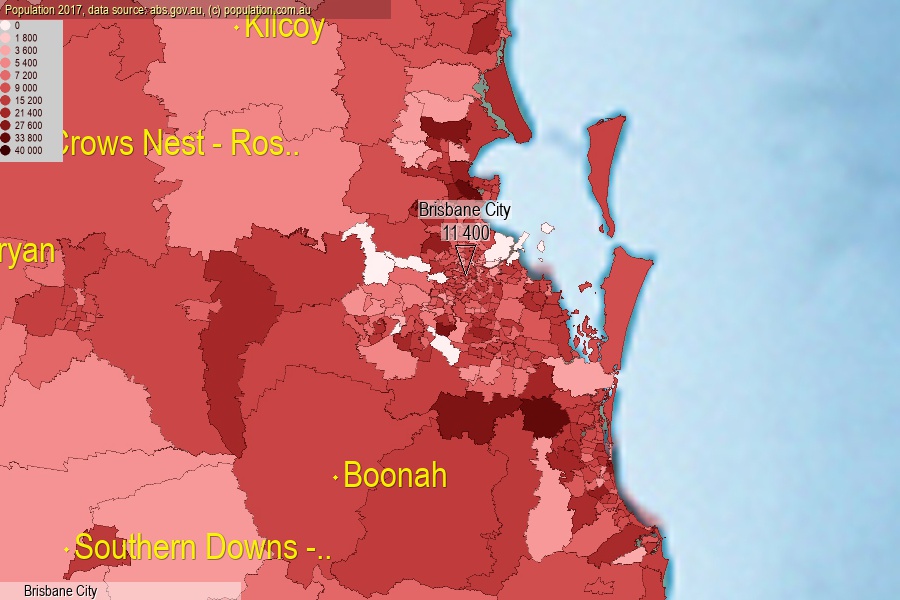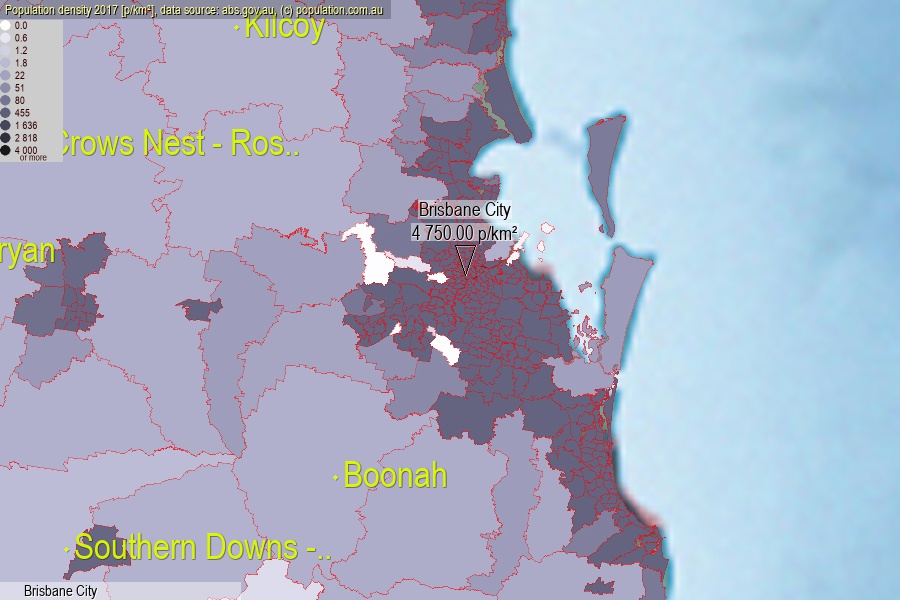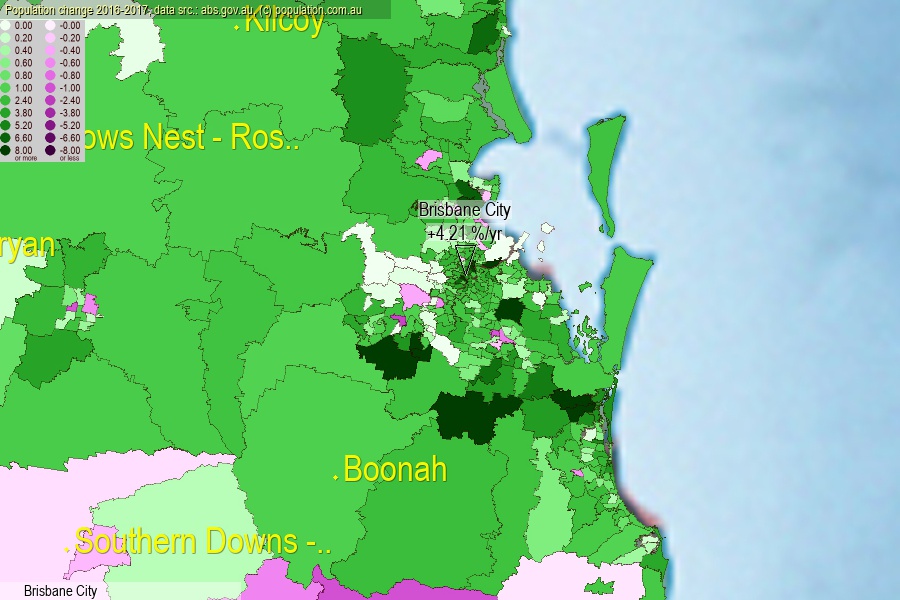 population.com.au
population.com.auLast official estimated population of Brisbane City (as Statistical Area Level 2) was 11 400 people (on 2017-06-30)[2]. This was 0.05% of total Australian population and 0.228% of QLD population. Area of Brisbane City is 2.40 km², in this year population density was 4 750.00 p/km² . If population growth rate would be same as in period 2016-2017 (+4.21%/yr), Brisbane City population in 2025 would be 15 861. [0]



Click to enlarge. Brisbane City is located in the center of the images.
Population [people], population density [p./km²] and population change [%/year] [2]
View borders » (new window) [4]
[1991-1992] -0.21 %/Yr.
[1992-1993] +1.80 %/Yr.
[1993-1994] +0.07 %/Yr.
[1994-1995] +4.61 %/Yr.
[1995-1996] +11.67 %/Yr.
[1996-1997] +22.00 %/Yr.
[1997-1998] +10.66 %/Yr.
[1998-1999] +6.23 %/Yr.
[1999-2000] +4.82 %/Yr.
[2000-2001] +8.65 %/Yr.
[2001-2002] +13.93 %/Yr.
[2002-2003] +42.70 %/Yr.
[2003-2004] +19.08 %/Yr.
[2004-2005] +22.71 %/Yr.
[2005-2006] +11.52 %/Yr.
[2006-2007] +14.57 %/Yr.
[2007-2008] +1.49 %/Yr.
[2008-2009] +2.43 %/Yr.
[2009-2010] +1.36 %/Yr.
[2010-2011] +3.96 %/Yr.
[2011-2012] +4.55 %/Yr.
[2012-2013] +2.53 %/Yr.
[2013-2014] +2.22 %/Yr.
[2014-2015] +3.45 %/Yr.
[2015-2016] +3.14 %/Yr.
[2016-2017] +4.21 %/Yr.
[0] Calculated with linear interpolation from officially estimated population
[1] Read more about SA2 and Australian Statistical Geography Standard (ASGS) on abs.gov.au
[2] Population data from Australian Bureau of Statistics (Population and density: 2017; change: 2016-2017)
[3] Digital Boundaries: Australian Statistical Geography Standard (ASGS) 2016.
[4] Border coordinates are simplifyed using Ramer-Douglas-Peucker algorithm.